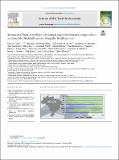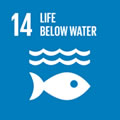Por favor, use este identificador para citar o enlazar a este item:
http://hdl.handle.net/10261/338014COMPARTIR / EXPORTAR:
 SHARE SHARE
 CORE
BASE CORE
BASE
|
|
| Visualizar otros formatos: MARC | Dublin Core | RDF | ORE | MODS | METS | DIDL | DATACITE | |

| Título: | Brominated flame retardants and natural organobrominated compounds in a vulnerable delphinid species along the Brazilian coast |
Autor: | Vidal, Lara G.; De Oliveira-Ferreira, Nara; Torres, João Paulo M.; Azevedo, Alexandre F.; Meirelles, Ana Carolina O.; Flach, Leonardo; Domit, Camila; Fragoso, Ana Bernadete L.; Lima Silva, Flávio J.; Carvalho, Vítor Luz; Marcondes, Milton; Barbosa, Lupércio A.; Cremer, Marta J.; Malm, Olaf; Lailson-Brito, José; Eljarrat, Ethel CSIC ORCID | Palabras clave: | Sotalia guianensis Cetaceans Marine mammals Methoxylated polybrominated diphenyl ethers Polybrominated diphenyl ethers |
Fecha de publicación: | 10-oct-2023 | Editor: | Elsevier | Citación: | Science of The Total Environment 905: 167704 (2023) | Resumen: | Guiana dolphins, Sotalia guianensis, are vulnerable to extinction along their distribution on the Brazilian coast and assessing chemical pollution is of utmost importance for their conservation. For this study, 51 carcasses of Guiana dolphins were sampled across the Brazilian coast to investigate legacy and emerging brominated flame retardants (BFRs) as well as the naturally-produced MeO-BDEs. PBDEs and MeO-BDEs were detected in all samples analyzed, whereas emerging BFRs were detected in 16 % of the samples, all in Rio de Janeiro state. PBDE concentrations varied between 2.24 and 799 ng.g-1 lipid weight (lw), emerging BFRs between 0.12 and 1.51 ng.g-1 lw and MeO-BDEs between 3.82 and 10,247 ng.g-1 lw. Concentrations of legacy and emerging BFRs and natural compounds varied considerably according to the sampling site and reflected both the local anthropogenic impact of the region and the diversity/mass of biosynthesizers. The PBDE concentrations are lower than what was found for delphinids in the Northern Hemisphere around the same sampling period and most sampling sites presented mean concentrations lower than the limits for endocrine disruption known to date for marine mammals of 460 ng.g-1 lw, except for sampled from Santa Catarina state, in Southern Brazil. Conversely, MeO-BDE concentrations are higher than those of the Northern Hemisphere, particularly close to the Abrolhos Bans and Royal Charlotte formation, that are hotspots for biodiversity. Despite the elevated concentrations reported for this group, there is not much information regarding the effects of such elevated concentrations for these marine mammals. The distinct patterns observed along the Brazilian coast show that organobrominated compounds can be used to identify the ecological segregation of delphinids and that conservation actions should be planned considering the local threats. | Versión del editor: | https://doi.org/10.1016/j.scitotenv.2023.167704 | URI: | http://hdl.handle.net/10261/338014 | DOI: | 10.1016/j.scitotenv.2023.167704 | ISSN: | 00489697 |
| Aparece en las colecciones: | (IDAEA) Artículos |
Ficheros en este ítem:
| Fichero | Descripción | Tamaño | Formato | |
|---|---|---|---|---|
| 1-s2.0-S0048969723063313-main.pdf | Artículo principal | 3,89 MB | Adobe PDF |  Visualizar/Abrir |
| 1-s2.0-S0048969723063313-mmc1.docx | Material suplementario | 60,1 kB | Microsoft Word XML | Visualizar/Abrir |
CORE Recommender
SCOPUSTM
Citations
1
checked on 23-abr-2024
Page view(s)
32
checked on 30-abr-2024
Download(s)
38
checked on 30-abr-2024
Google ScholarTM
Check
Altmetric
Altmetric
NOTA: Los ítems de Digital.CSIC están protegidos por copyright, con todos los derechos reservados, a menos que se indique lo contrario.


